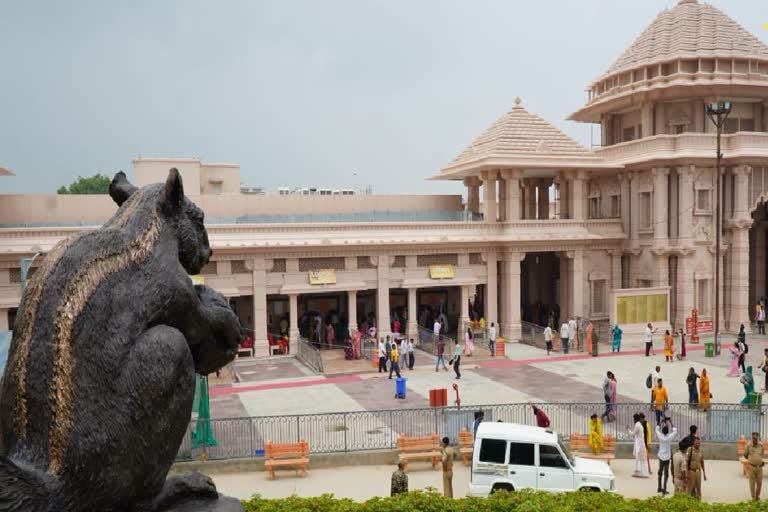As the grand Ram Temple in Ayodhya nears completion, every element of its design carries deep cultural, spiritual, and symbolic meaning. Among the most talked-about additions is the installation of a squirrel statue at the temple site. At first glance, this may appear to be a minor detail compared to the grand architecture of the temple, but its significance lies in the timeless values drawn from the epic Ramayana.
The statue serves as a reminder that devotion, humility, and selfless service - no matter how small - are invaluable in divine endeavors.
The Symbolic Placement of the Statue
According to Nripendra Mishra, Chairman of the temple construction committee, the squirrel statue has been placed at Angad Teela, where it looks toward the temple sanctum. This thoughtful placement ensures that devotees are reminded of the squirrel’s contribution and the larger message of inclusivity and respect for even the smallest acts of service.
The statue is not just an architectural ornament; it is a philosophical and devotional marker woven into the narrative of the temple itself.
The Role of the Squirrel in the Ramayana
1. The Construction of Ram Setu
The Ramayana narrates how Lord Ram’s Vanar Sena (army of monkeys) worked tirelessly to build a bridge across the sea to reach Lanka and rescue Mata Sita. While the mighty monkeys carried colossal stones and boulders, a small squirrel also joined in.
It carried grains of sand and tiny pebbles in its mouth and on its back.
These small contributions helped fill the gaps between the stones, strengthening the bridge.
2. A Lesson in Equality and Devotion
When some monkeys mocked the squirrel for its small size and effort, Lord Ram intervened. He explained that the bridge needed both large boulders and small grains of sand to hold together. Without the squirrel’s contribution, the bridge would not be complete.
Lord Ram emphasized that every offering, whether big or small, holds value when made with devotion.
He credited the squirrel alongside the vanaras for building the Ram Setu, teaching his army a lesson in humility and respect.
3. The Divine Blessing
Pleased with the squirrel’s dedication, Lord Ram gently stroked its back with three fingers. It is believed that from that moment onwards, squirrels bore the three stripes on their backs as a mark of Ram’s affection and blessing.
The Message Behind the Squirrel Statue
The squirrel represents:
Devotion and Humility: Even the smallest act of service can hold divine significance.
Unity in Purpose: Great tasks are accomplished not only by the mighty but also by the humble, when everyone works together.
Inclusivity: Every being, regardless of size or strength, has a role to play in service to the divine.
By immortalizing the squirrel in stone, the Ram Temple Trust reminds devotees that building the temple was not just about architecture and engineering, but also about faith, dedication, and collective effort.
Relevance in Today’s World
In a modern context, the squirrel’s role is symbolic of how society thrives when each individual contributes selflessly.
Large achievements, whether in building nations, institutions, or communities, require both monumental and seemingly small efforts.
Just as the squirrel’s tiny grains of sand were indispensable to the Ram Setu, small acts of kindness and service today strengthen the foundations of society.
For devotees, the squirrel statue at Ayodhya is more than a religious symbol—it is a call to embrace humility, unity, and devotion in all aspects of life.
The installation of the squirrel statue at the Ram Janmabhoomi Temple in Ayodhya is a powerful gesture rooted in the timeless wisdom of the Ramayana. It reminds the world that every contribution matters, and that true greatness lies not in the size of one’s deeds, but in the sincerity and devotion behind them.
As the temple opens its doors to millions of devotees, the humble squirrel will stand forever as a beacon of faith, service, and divine inclusivity.


